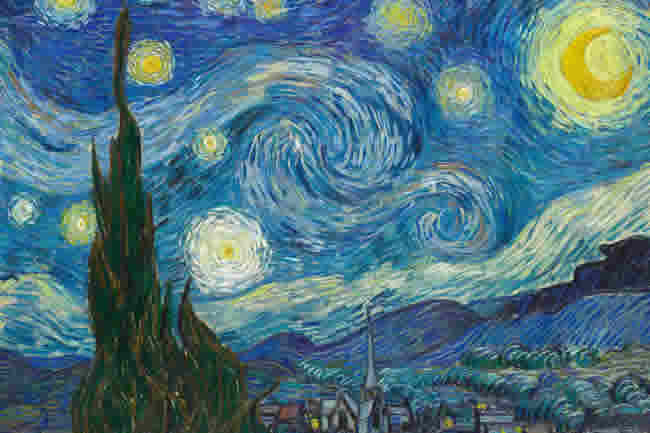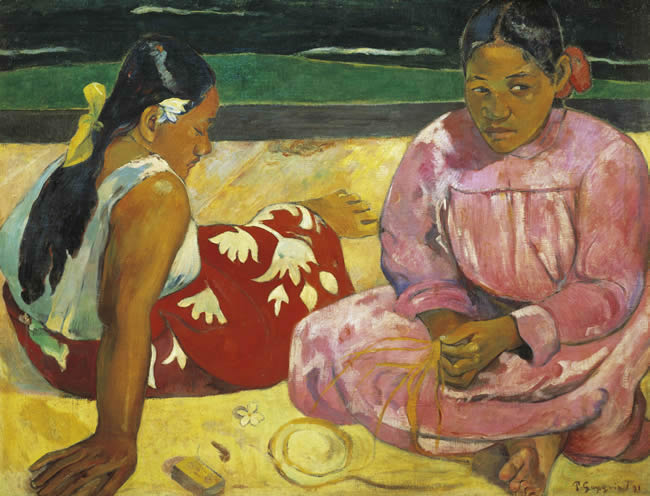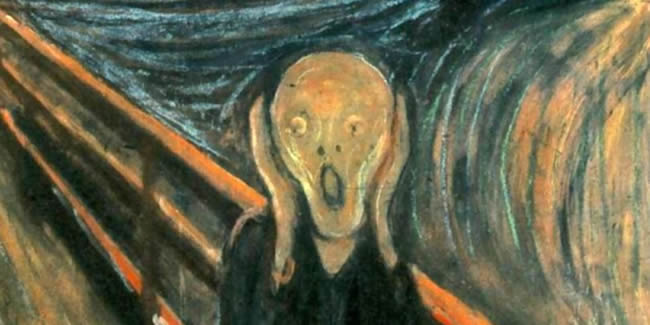The idea that mental illness somehow contributes to or enhances creativity has been discussed and debated for centuries. Even the Ancient Greek philosopher Aristotle subscribed to the trope of the tortured genius, theorizing that "no great mind has ever existed without a touch of madness." Although the link between mental suffering and creative ability has since been debunked, it is true that some of the western canon's most celebrated visual artists have struggled with mental health issues. For some of these artists, inner demons made their way into their work; for others, the act of creation served as a form of therapeutic relief.
01
of 05

In perhaps no artist’s work is the onset of mental illness more easily identified as in Francisco Goya’s. The artist’s work can be easily divided into two periods: the first is characterized by tapestries, cartoons, and portraits; the second period, the “Black Paintings” and “Disasters of War” series, depict Satanic beings, violent battles, and other scenes of death and destruction. Goya’s mental deterioration is linked to the onset of his deafness at age 46, at which time he became increasingly isolated, paranoid, and afraid, according to letters and diaries.
02
of 05

At the age of 27, Dutch painter Vincent van Gogh wrote in a letter to his brother Theo: “My only anxiety is, how can I be of use in the world?” Over the course of the next 10 years, it seemed that van Gogh had gotten closer to finding an answer to that question: through his art, he could leave a lasting impact on the world and find personal fulfillment in the process. Unfortunately, despite his enormous creativity during this period, he continued to suffer from what many have speculated to be bipolar disorder and epilepsy.
Van Gogh lived in Paris between the years 1886 to 1888. During that time, he documented in letters “episodes of sudden terror, peculiar epigastric sensations, and lapses of consciousness.” Especially during the last two years of his life, van Gogh experienced bouts of high energy and euphoria following bouts of periods of deep depression. In 1889, he voluntarily committed himself to a mental hospital in Provence called Saint-Remy. While under psychiatric care, he created a stunning series of paintings.
Just 10 weeks after his discharge, the artist took his own life at the age of 37. He left behind an enormous legacy as one of the most creative and talented artistic minds of the 20th century. It turns out, despite a lack of recognition during his lifetime, van Gogh had more than enough to offer this world. One can only imagine what more he could have created if he had lived a longer life.
03
of 05

After several suicide attempts, Gauguin fled the stresses of Parisian life and settled in French Polynesia, where he created some of his most famous works. Although the move provided artistic inspiration, it was not the reprieve he needed. Gauguin continued to suffer from syphilis, alcoholism, and drug addiction. In 1903, he died at age 55 after a bout of morphine use.
04
of 05

No one could create a painting like the “Scream” without the help of some inner demons. Indeed, Munch documented his struggles with mental health issues in diary entries, in which he described suicidal thoughts, hallucinations, phobias (including agoraphobia) and other feelings of overwhelming mental and physical pain. In one entry, he described the mental breakdown that resulted in his most famous masterpiece “The Scream”:
I was walking along the road with two of my friends. Then the sun set. The sky suddenly turned into blood, and I felt something akin to a touch of melancholy. I stood still, leaned against the railing, dead tired. Above the blue black fjord and city hung clouds of dripping, rippling blood. My friends went on and again I stood, frightened with an open wound in my breast. A great scream pierced through nature.”
05
of 05

After suffering a number of psychotic breaks, accompanied by hallucinations, Agnes Martin was diagnosed with schizophrenia in 1962 at the age of 50. After being found wandering around Park Avenue in a fugue state, she was committed to the psychiatric ward at Bellevue Hospital where she underwent electro-shock therapy.
After her discharge, Martin relocated to the New Mexico desert, where she found ways to successfully manage her schizophrenia into old age (she died at 92 years old). She regularly attended talk therapy, took medication, and practiced Zen Buddhism.
Unlike many other artists who experienced mental illness, Martin contended that her schizophrenia has absolutely nothing to do with her work. Nonetheless, knowing a little of the backstory of this tortured artist can add a layer of meaning to any viewing of Martin’s serene, almost zen-like abstract paintings.
If you or a friend or loved one is suffering, considering suicide, or would like emotional support, the National Suicide Prevention Lifeline (1-800-273-TALK) is available 24/7 across the United States.
